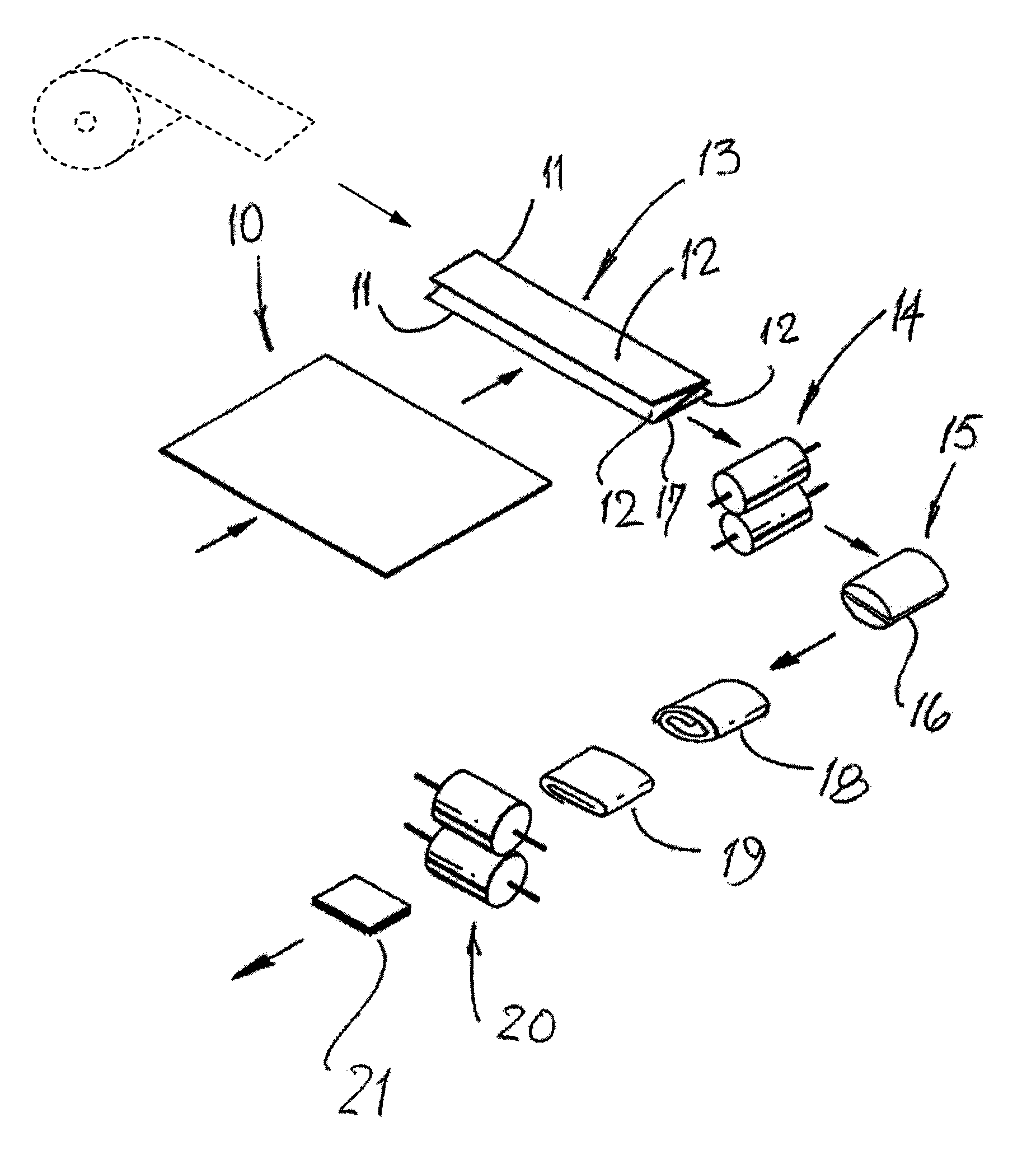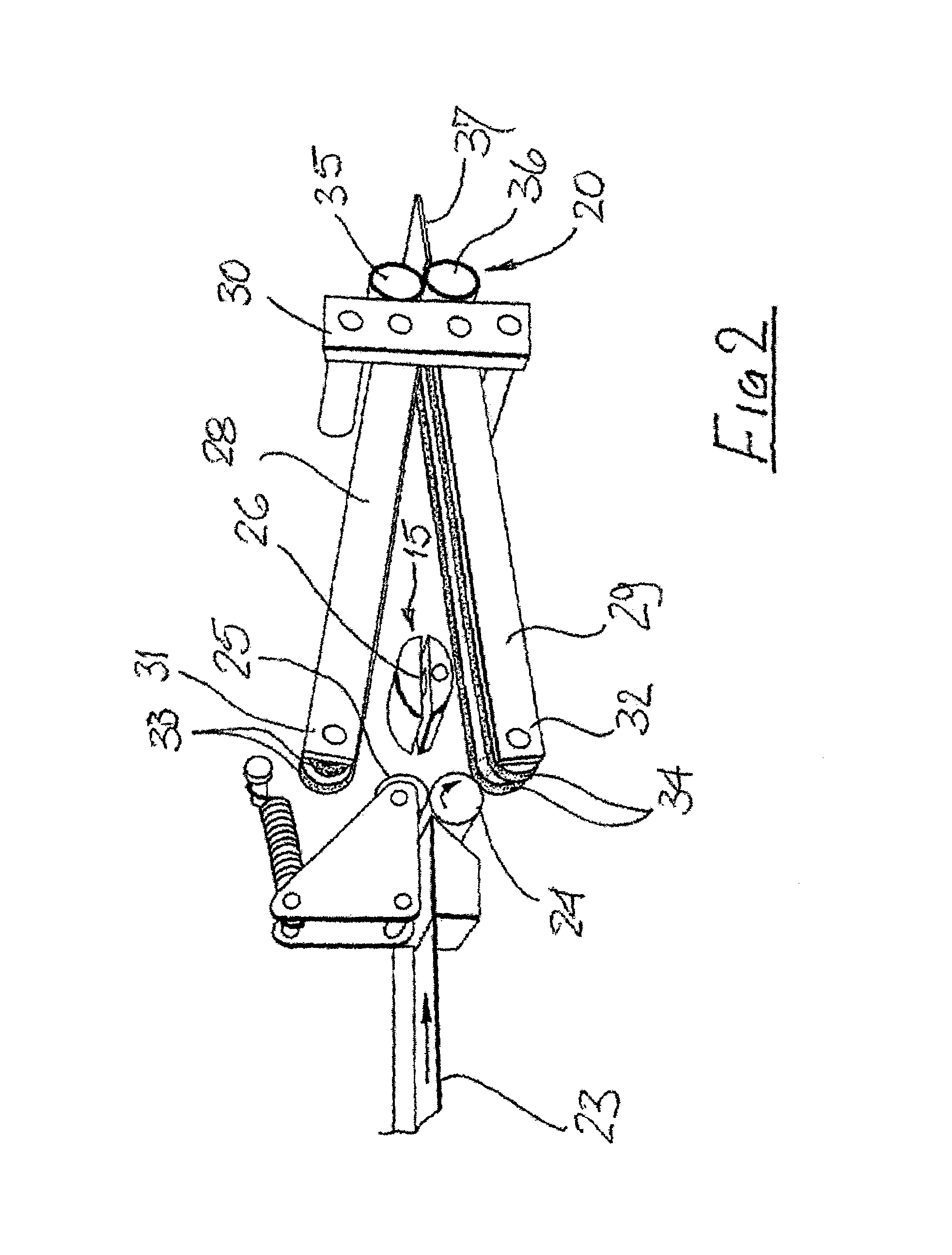Leaflet production
a leaflet and equipment technology, applied in the field of leaflet production, can solve the problems of increasing packaging complexity, affecting the content of information leaflets and cartons, and not being able to print all of the information on a cardboard carton, so as to reduce the degree of compression of wound sheets required to produce a flat leaflet, the effect of large printed area
- Summary
- Abstract
- Description
- Claims
- Application Information
AI Technical Summary
Benefits of technology
Problems solved by technology
Method used
Image
Examples
first embodiment
[0059]FIGS. 8 to 12 show an alternative embodiment of machine for producing a leaflet by the process of this invention, but which embodiment eliminates the axial movement of the mandrel following winding of a folded sheet therearound. In this embodiment, the mandrel 15 corresponds to that described above, except that the carrier (not shown) for the mandrel parts is axially fixed. Further, each arm 28,29 is significantly narrower than with the first embodiment and carries only a single belt 33,34. The arms are arranged closely adjacent the carrier for the mandrel and have a width of less than half the axial length of the mandrel, as shown in FIGS. 8 and 9.
[0060]A pair of removal belts 40,41 are mounted on respective carriers 42,43 to run around end rollers 44,45 rotatably mounted on those carriers. Each carrier is articulated part way between its ends and an idler roller 46 is rotatably mounted at that articulation. A drive arrangement (not shown) is provided for each removal belt 40...
second embodiment
[0064]It will be appreciated that from an engineering perspective, the machine illustrated in FIGS. 8 to 12 would be very difficult to manufacture and special support arrangements would have to be provided for the plates 50 and wedge-shaped former 51. Though an alternative engineered solution would have to be provided for a practical machine, nevertheless the principle of operation is adequately illustrated by this
[0065]Though not shown in the drawings, the machine may include an adhesive applicator provided before the final squeezing by further roller nip 20, to allow sealing of the end part of the wound sheet to the body of the leaflet. This will prevent inadvertent unwinding of the leaflet.
[0066]FIGS. 13A and 13B are cross-sections through two alternative mandrel designs, for use in either embodiment of machine as described above. The mandrel shown in FIG. 13A is substantially as shown in the embodiments of machine as described above and has a shape which is essentially symmetric...
PUM
| Property | Measurement | Unit |
|---|---|---|
| compress | aaaaa | aaaaa |
| semi-elliptical shape | aaaaa | aaaaa |
| pressure | aaaaa | aaaaa |
Abstract
Description
Claims
Application Information
 Login to View More
Login to View More - R&D
- Intellectual Property
- Life Sciences
- Materials
- Tech Scout
- Unparalleled Data Quality
- Higher Quality Content
- 60% Fewer Hallucinations
Browse by: Latest US Patents, China's latest patents, Technical Efficacy Thesaurus, Application Domain, Technology Topic, Popular Technical Reports.
© 2025 PatSnap. All rights reserved.Legal|Privacy policy|Modern Slavery Act Transparency Statement|Sitemap|About US| Contact US: help@patsnap.com



